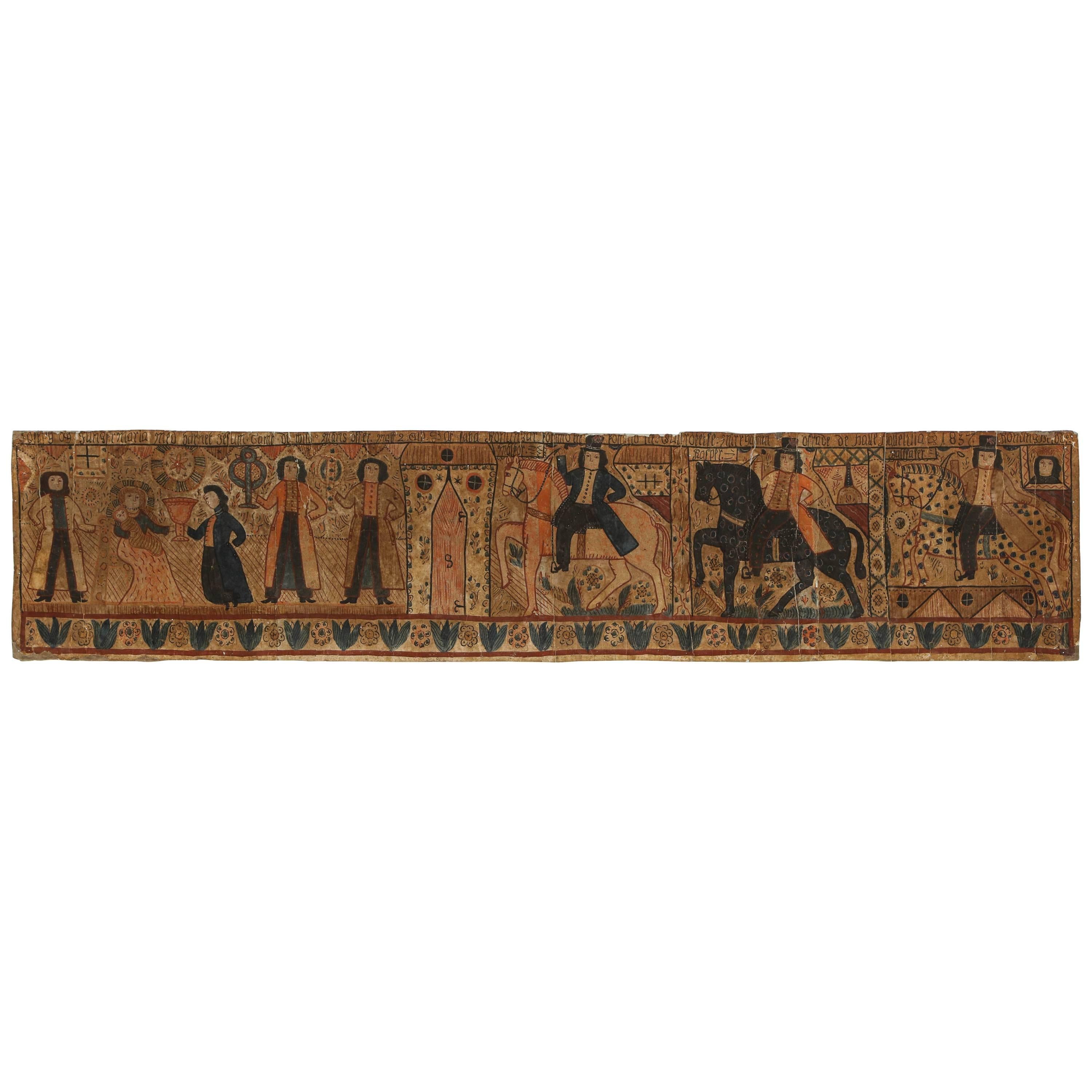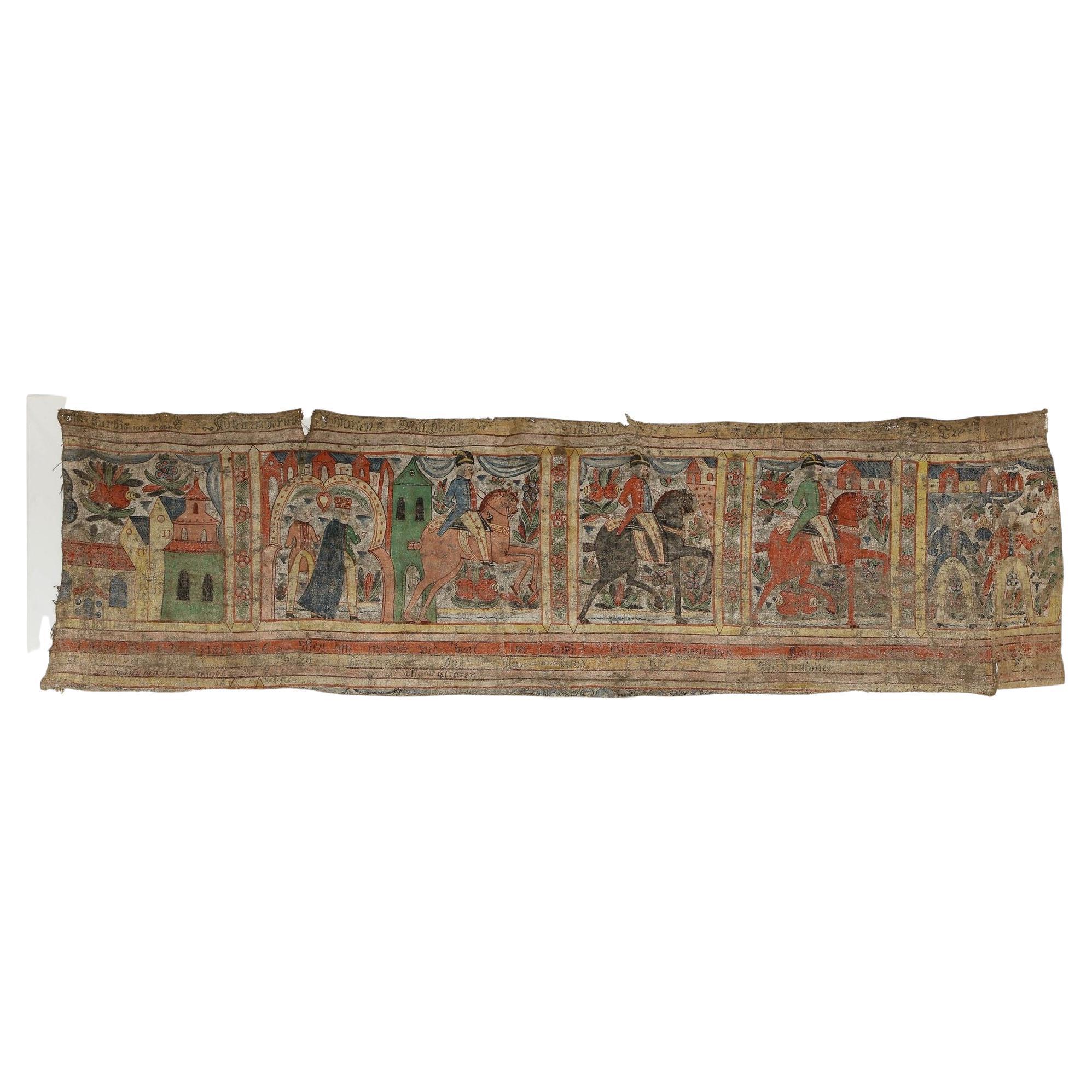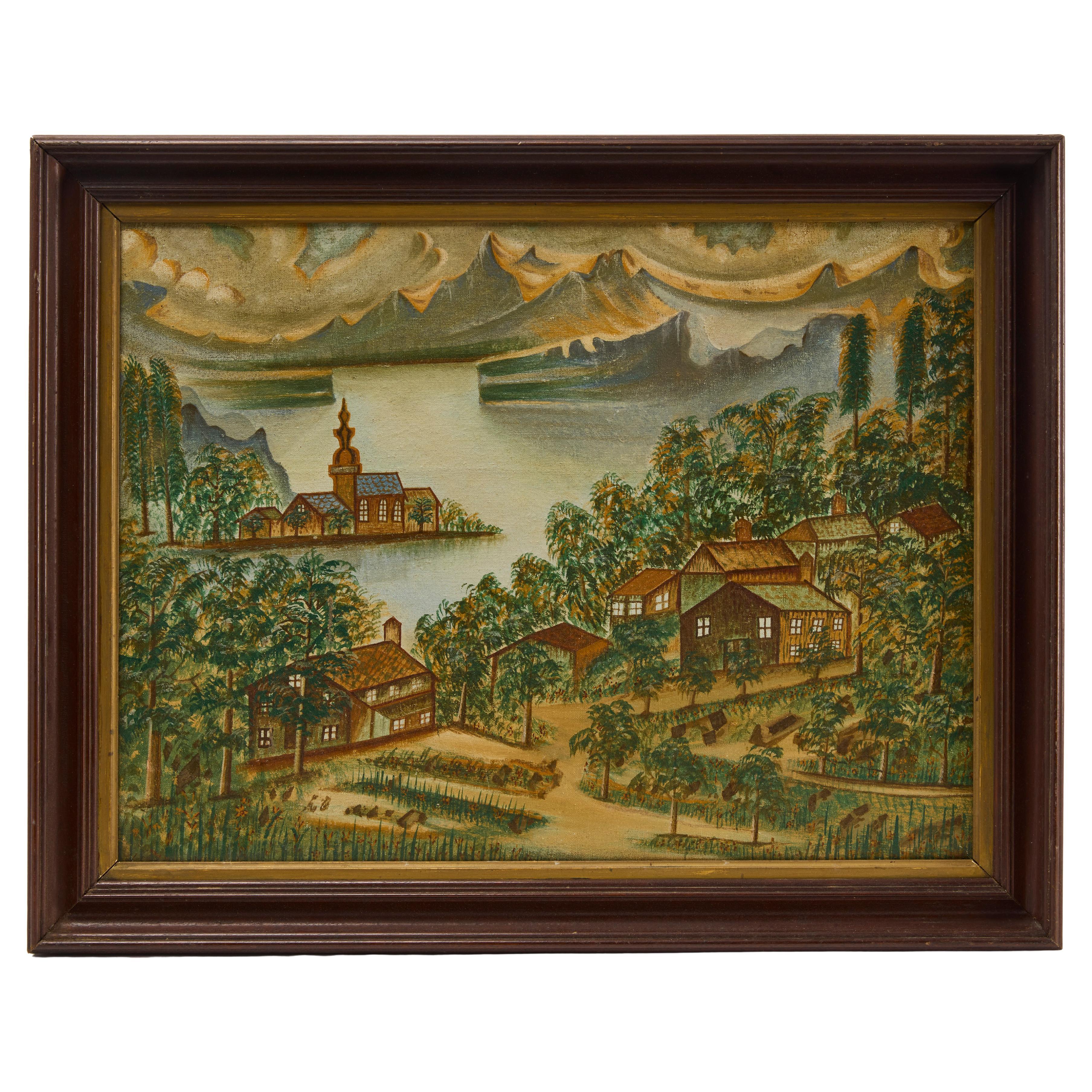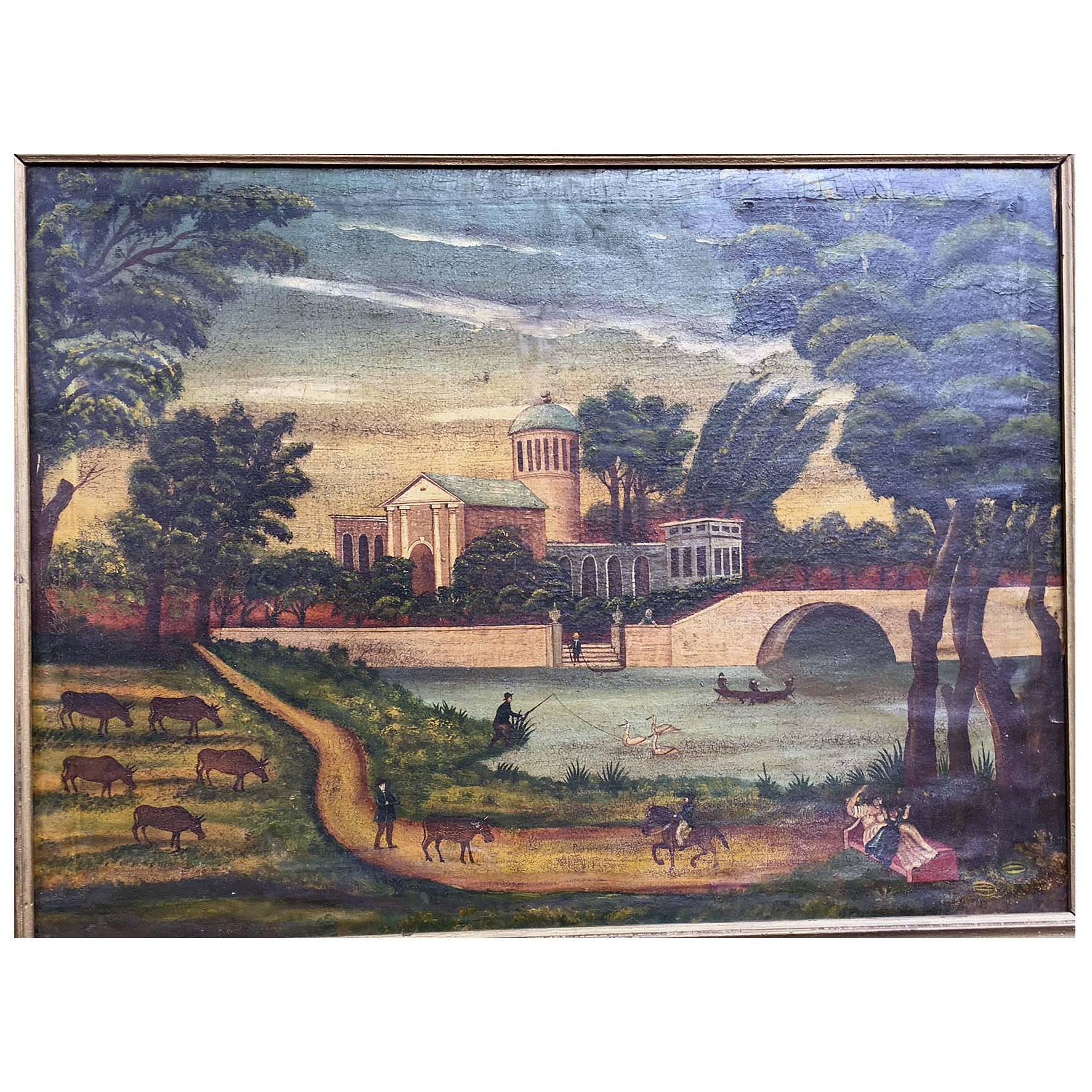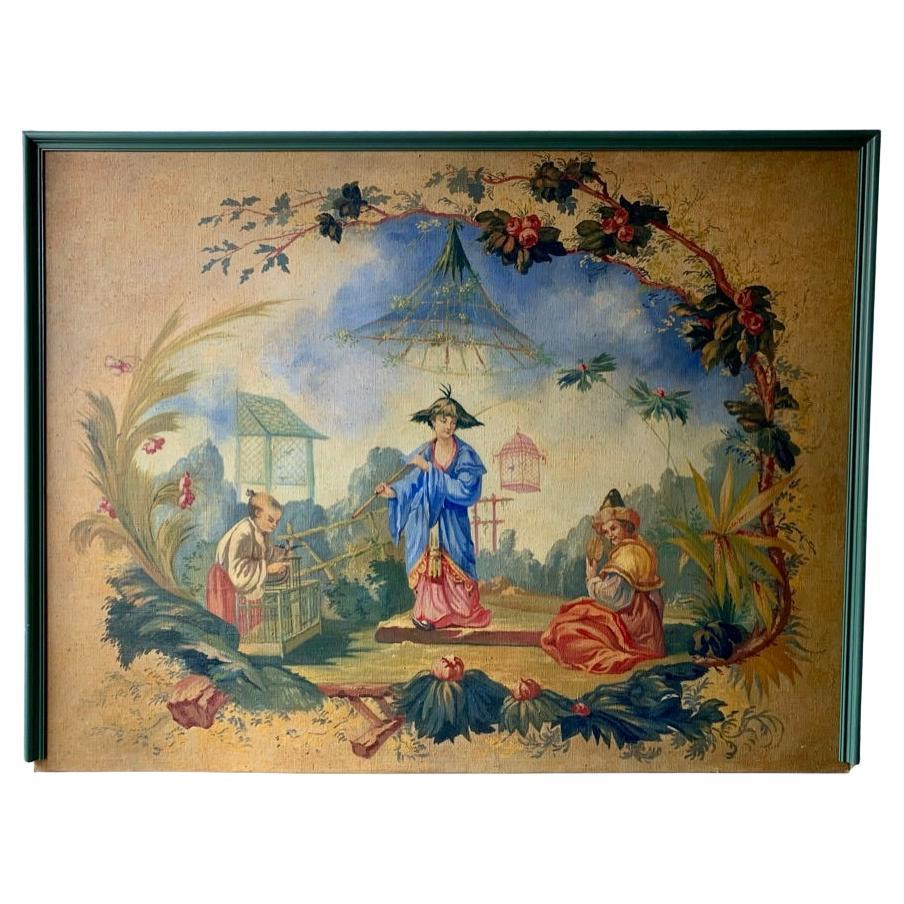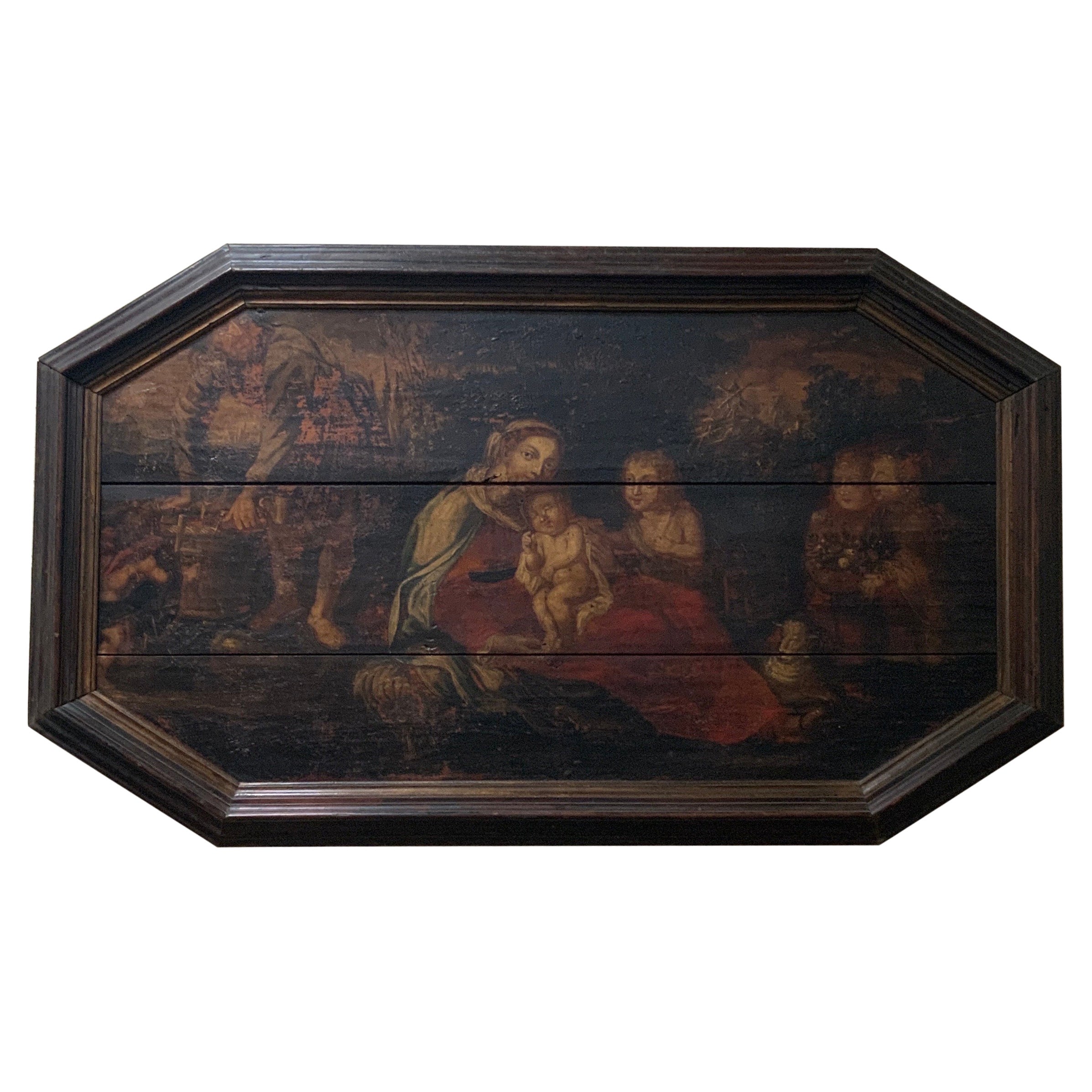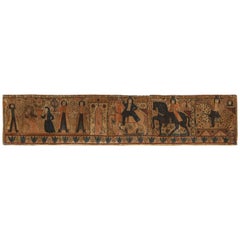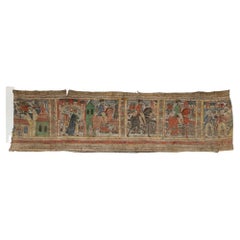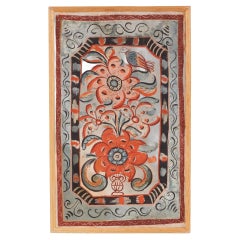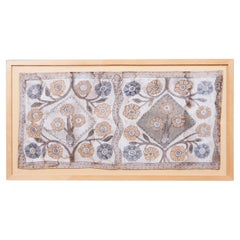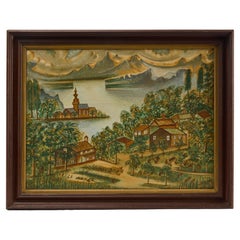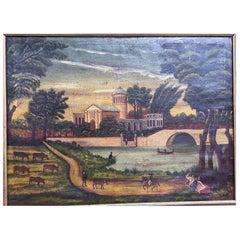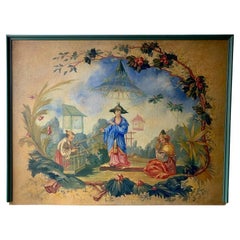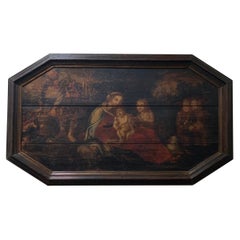Want more images or videos?
Request additional images or videos from the seller
1 of 13
Midsummer Night
$4,900
£3,700.03
€4,263.88
CA$6,915.98
A$7,624.71
CHF 3,989
MX$93,541.07
NOK 50,213.66
SEK 46,957.71
DKK 31,842.76
About the Item
An 18th century folk-art painting on board in wonderful colors including dusty blues and oranges, depicting finely attired characters in period costumes in a bacchanalian outdoor festivity under the moonlight with a verdant background of birds, flowers, olives and cypresses. Italy, probably Sicily, circa 1790.
- Dimensions:Height: 13 in (33.02 cm)Width: 44 in (111.76 cm)Depth: 1.5 in (3.81 cm)
- Style:Folk Art (Of the Period)
- Materials and Techniques:
- Place of Origin:
- Period:1790-1799
- Date of Manufacture:1790
- Condition:Minor losses. very good original condition, untouched - wear and tear as expected, some losses.
- Seller Location:Greenwich, CT
- Reference Number:Seller: YEWTREEHOUSE1000A1stDibs: LU798335592042
About the Seller
5.0
Recognized Seller
These prestigious sellers are industry leaders and represent the highest echelon for item quality and design.
Gold Seller
Premium sellers maintaining a 4.3+ rating and 24-hour response times
Established in 1991
1stDibs seller since 2004
278 sales on 1stDibs
Typical response time: 1 hour
Associations
The Art and Antique Dealers League of AmericaAntiques Associations Members
- ShippingRetrieving quote...Shipping from: Bridgeport, CT
- Return Policy
Authenticity Guarantee
In the unlikely event there’s an issue with an item’s authenticity, contact us within 1 year for a full refund. DetailsMoney-Back Guarantee
If your item is not as described, is damaged in transit, or does not arrive, contact us within 7 days for a full refund. Details24-Hour Cancellation
You have a 24-hour grace period in which to reconsider your purchase, with no questions asked.Vetted Professional Sellers
Our world-class sellers must adhere to strict standards for service and quality, maintaining the integrity of our listings.Price-Match Guarantee
If you find that a seller listed the same item for a lower price elsewhere, we’ll match it.Trusted Global Delivery
Our best-in-class carrier network provides specialized shipping options worldwide, including custom delivery.More From This Seller
View AllHand Painted Wall Panel
Located in Greenwich, CT
A folk art wall panel hand painted by an itinerant artist in Sweden in 1837 (dated), depicting the nativity, with the three kings on horseback paying homage to Mary seated on a thron...
Category
Antique Early 19th Century Swedish Paintings
Materials
Paper
$8,600
Swedish Folk Art Mural
Located in Greenwich, CT
Beautiful Swedish Folk Art mural (or bonad), also referred to as a kurbitz or kurbits, depicting King Herod and the three wise men dressed in 18th century...
Category
Antique 1820s Swedish Paintings
Materials
Linen
$29,000
Swedish Folk Art Painted Panel
Located in Greenwich, CT
Good early 19th century Swedish folk painted wall panel depicting a flowering urn with perched bid, surrounded by several scroll-painted borders, all in pleasing blues, grays and ora...
Category
Antique 1840s Swedish Folk Art Decorative Art
Materials
Canvas
Swedish Folk Art Panel
Located in Greenwich, CT
Early 19th Century Swedish folk painted wall decoration depicting flowers and plants, painted on re-purposed home spun cloth, in wonderful blues, golds and grey tones.
Category
Antique Early 19th Century Swedish Folk Art Decorative Art
Materials
Fabric
$3,900
Swedish 19th C. Bonad Angel
Located in Greenwich, CT
A 19th century Swedish folk art painting on canvas, known as a bonad, depicting a woman, perhaps an angel, in very fine clothes in a paint decorated room with a small window, with a ...
Category
Antique 1830s Swedish Paintings
Materials
Canvas
Framed 18th c. Merchant Trade Sign
Located in Greenwich, CT
A late 18th century/early 19th century trade sign from a Dutch West Indies shipping merchant. The carved wood and polychromed sign depicts a winged-foot Mercury figure surrounded by ...
Category
Antique Late 18th Century Dutch Folk Art Signs
Materials
Wood
You May Also Like
Fanciful Folk art Village Painting
Located in Branford, CT
Interesting fanciful folk art village painting. American, 19th century. Original frame.
H 18" W 24" Frame H 21-3/4" W 28".
Inspected under UV light...
Category
Antique 1880s American Folk Art Paintings
Materials
Paint
18th Century Naive Landscape
Located in Montreal, QC
An 18th century naive landscape, in the middle ground is a neoclassical structure and round tower, the forerground with an extensive landscape depictin...
Category
Antique Late 18th Century Unknown Folk Art Paintings
Materials
Paint
Hand Painted Decorative Panel
Located in Hellerup, DK
Spectacular vintage hand oil painted panel depicting a Chinese outdoor scenery with a man carrying a bird cage over his shoulder, a fanning man sitting down and a boy letting a bird out of its cage. All three surrounded by tree branches, leafs, roses, peonies and other flowers and greens. The detailed and very skillfully painted chinoiserie used...
Category
Vintage 1950s French Paintings
Materials
Canvas, Wood, Paint
15th Century Oil Painting on Board
Located in Dallas, TX
This gorgeous Dutch painting features a woman with an infant and small child. Painting is from the 1450s.
Category
Antique 15th Century and Earlier European Paintings
Materials
Wood, Paint
French folk art painting
Located in grand Lancy, CH
French folk art painting , one part of the frame is missing
Category
Vintage 1950s French Paintings
Materials
Wood
$1,310
19th Century Oil / Canvas Painting
Located in Tarry Town, NY
Early 19th century gilt wood framed oil on canvas painting featuring basket of fruits and flowers. The painting is in good antique condition. Minor wear consistent with age / use. Ar...
Category
Antique Mid-19th Century Paintings
Materials
Giltwood, Paint
$2,080 Sale Price
20% Off
More Ways To Browse
Folk Art Painting On Board
Kittie Bruneau
Marcel Wibault
Maurice Dupras
Omar Chkhaidze
Primitive Paintings Of Children
Rene Bokoko
Rene Sinicki
Robert James Walsh
Sex Scenes
Toxic Mary
Retro Modern Chandeliers
Runner Rugs
Scandanavian Mid Century Modern Furniture
Art Table
Antique Office Table
Used Cocktail Tables
Light Bulb Lamp
